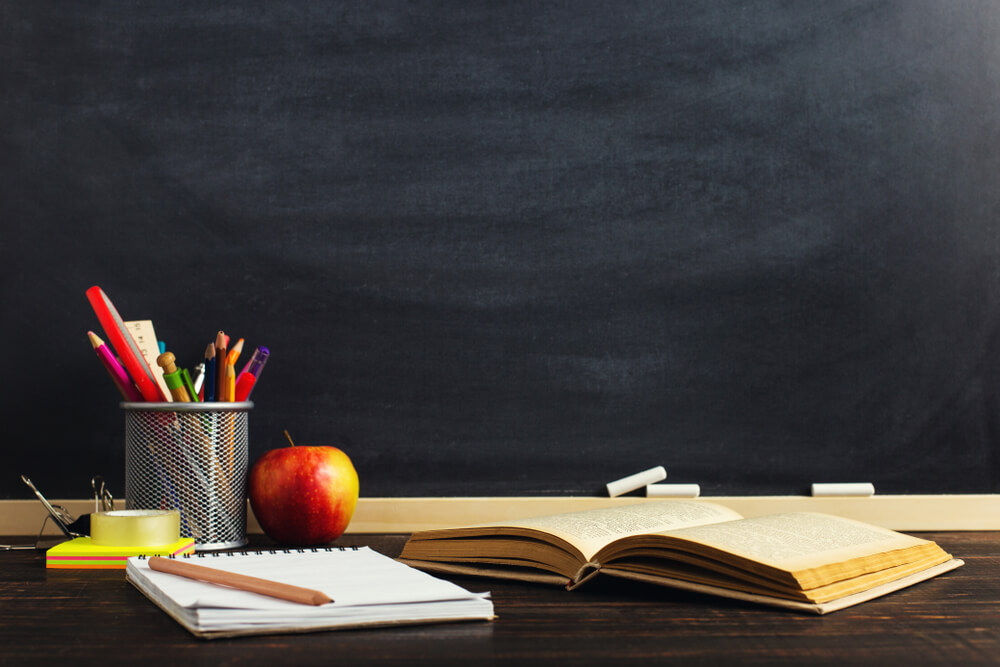Time-Saving Tips for Maximizing Instructional Time in the Classroom
Every teacher knows that time is a precious commodity. It can be a challenge to find enough time during the school day to meet each of your student’s needs, complete daily responsibilities, and achieve curriculum goals. As academic standards continue to evolve, so does the importance of increasing impactful learning time.
Managing Your Workload
Even if your district has built-in times for instructional planning for teachers, it can be a struggle to fit your entire to-do list into one planning period. Between preparing and differentiating lessons, grading student work, answering parent emails, after-school tutoring, and other extracurricular responsibilities, your working hours quickly begin to extend well beyond the school day.
The EdWeek Research Center conducted a national survey to answer the question, “how many hours a week do teachers work?” The survey found that a typical teacher works about 54 hours a week, with just under half of that time spent directly teaching students.
Teachers’ workloads continue to increase as the landscape of educational policy shifts and teaching methods evolve. These stressors can have a negative impact on your well-being, which can make it even more difficult to manage your time well. Prioritizing self-care will help you prevent burnout and, as a result, help your students achieve success.
Preparing for Your Year
Before the school year begins, consider creating a checklist to ensure that you’re prepared for the new year. Effective planning is the first step in maximizing instructional time in the classroom.
All teachers share a common goal of increasing time on-task in the classroom. Don’t be shy about asking veteran teachers for their best time-saving tips. They understand the demands of teaching and have years of experience in honing their methods. Your colleagues are an excellent resource!
We’ve compiled a list of some of the best time-saving tools for your classroom in the following areas:
- Teacher organization
- Classroom management
- Classroom organization
1. Teacher Organization Tips
By taking time behind the scenes to organize yourself and your materials, you will be able to focus on increasing time on-task in the classroom.
Organize Your Workspace
Teacher desks can quickly become overwhelmed with clutter by the end of the day. An organized desk will help you feel calmer, as well as save you from wasting time searching for what you need. The good news is that there are plenty of teacher desk ideas to help you tackle the chaos and find the right organizational system for you.
If you frequently move throughout your classroom or travel from room to room, you may find it helpful to create a “mobile” workspace, rather than a desk. Rolling carts can be transformed into portable workstations, customized with all the supplies that you need.

Organize Your Documents
Between lesson plans, student files, homework, notes to home, and class work, teachers deal with a constant influx of paperwork. By establishing a teacher filing system, you’ll be able to locate important papers quickly and easily.
- Teacher organizer – Whether you prefer to use an organizational app or a planner book, it saves time to have your information accessible.
- Binders – Some teachers find it helpful to create a teacher binder to store important documents in a central location.
- Google Drive – If you prefer to access documents digitally, Google Drive can be a helpful time-saving tool. By color-coding your Google Drive folders, you can quickly scan and find the documents that you need.
Prepare for the Day
Successful teachers know that preparation is key to a smooth school day. You may prefer to stay after school to reset and prepare for the next day, while your co-teacher may prefer to prepare in the morning before school begins. You know what works best for you—but regardless, making sure that you have all of the required items ahead of the lesson will keep your students on task.
Be Ready for Anything
Sometimes, you may find that you have a small window of downtime—not enough time to introduce a new lesson but too much time to offer “free time” to your students. Maybe your students grasp a concept more quickly than you anticipated, or an interruption like a fire drill or an illness disrupts your schedule.
Consider creating a file of mini-lessons with fun, quick educational activities for those unexpected moments of downtime. You may also want to keep brain teaser cards or a list of conversation topics on hand as a quick, no-prep activity to help your students stay engaged.
For the times when you need to call out sick, or you have a family emergency, it can be helpful to have a substitute teacher plan. By preparing ahead of time for a substitute, you can make sure that things run smoothly in your classroom while you’re gone—and your students won’t lose a day of learning.
2. Classroom Management Tips
There are a few areas of classroom management that teachers can focus on to save time during the school day.
- Daily schedule – Before the school year begins, evaluate your daily schedule to see if there are any windows of time that could be used more efficiently. In the morning, consider providing a “warm-up” activity or worksheet for students to complete independently while others arrive and you take attendance. If you have early finishers, have a bin of independent activities next to turn-in bins for your classroom. By maximizing small pockets of time in your day, you’ll increase students’ active learning time.
- Classroom routines – The more you streamline and standardize your routines, the more instructional time you’ll have. To be able to maximize instructional time during the school day, students need to have clear expectations and procedures—for everything. Students of all learning styles will benefit when you explain your procedures, create visuals, and have them physically practice them.
- Transitions – Transitioning students smoothly from one activity to the next can be difficult. However, efficient transitions are important for maximizing instructional time in the classroom. If you save 15 minutes a day by creating effective transitions, you will have 45 extra hours of instructional time by the end of the year. Timers are excellent tools to use to help you and your students stay on track.
- Classroom jobs- Classroom jobs are not just a time-saving tool for teachers, they help to teach students responsibility, develop life skills, and promote the five social and emotional learning competencies. There are many responsibility bulletin board ideas for you to display your jobs. Find the option that works best for your classroom.

3. Classroom Organization Ideas
When your classroom is organized, you and your students will spend less time searching for what you need and more time engaging in learning. There are countless options for how to declutter your classroom—choose what works for you!
- Student work areas – Whether your students have individual desks or group tables, it’s important for them to learn organizational skills for their materials. The organizational methods you use will be unique to your classroom and your students’ learning needs. There are plenty of to help you put an end to messy desks and wasted time.
- Classroom library – Organize your classroom books by author, genre, or reading level so that your students can easily and independently find the books that they need. Consider color-coding your classroom library so that your beginning readers can independently locate the books that are the right level for them.
- Classroom materials – Manipulatives, headphones, iPads, subject folders—teachers and students have plenty of materials to keep track of throughout the day. Stop losing precious time searching for the right materials and check out these classroom storage ideas.

It can feel like there aren’t enough hours in the day to get everything done, but incorporating some of these time-saving tools can help your classroom run more efficiently. Successful teachers know that effective planning and preparation are the key to maximizing instructional time in the classroom. Choose from two styles to keep your weekly planning, and activities more organized.


